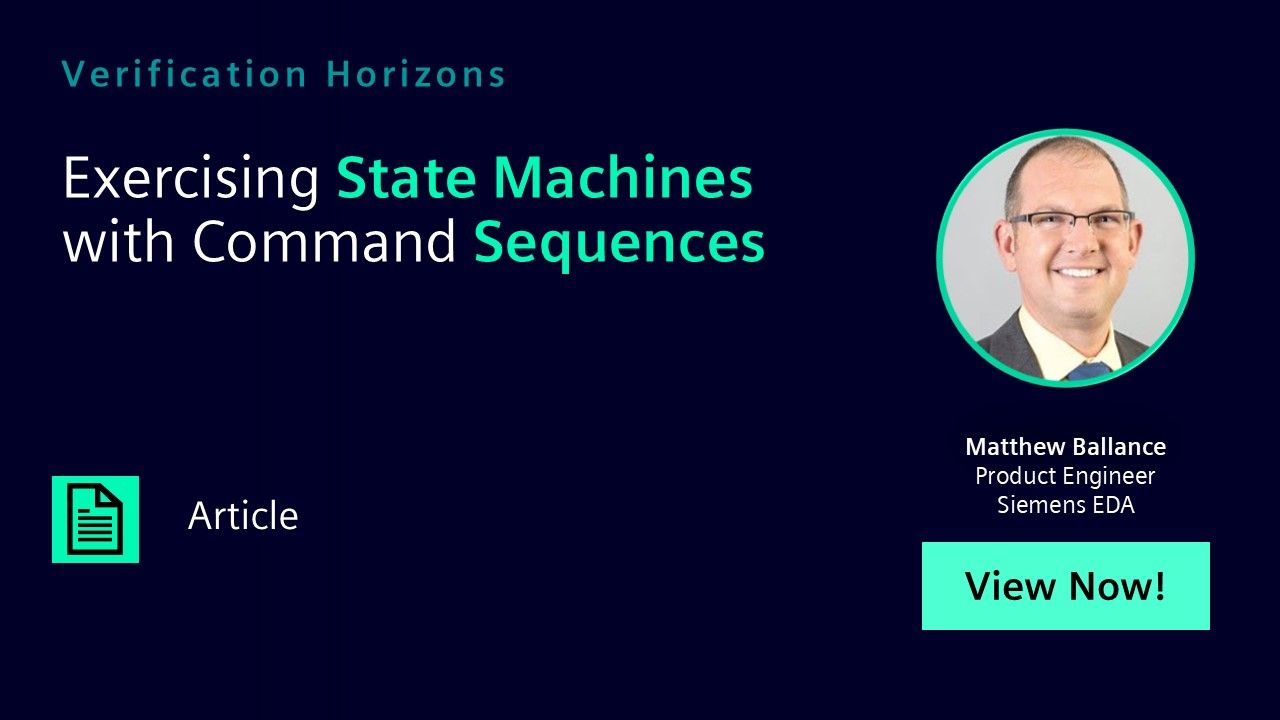Exercising State Machines with Command Sequences
Almost every non-trivial design contains at least one state machine, and exercising that state machine through its legal states, state transitions, and the different reasons for state transitions is key to verifying the design’s functionality. In some cases, we can exercise a state machine simply as a side-effect of performing normal operations on the design.

Full-access members only
Register your account to view Exercising State Machines with Command Sequences
Full-access members gain access to our free tools and training, including our full library of articles, recorded sessions, seminars, papers, learning tracks, in-depth verification cookbooks, and more.